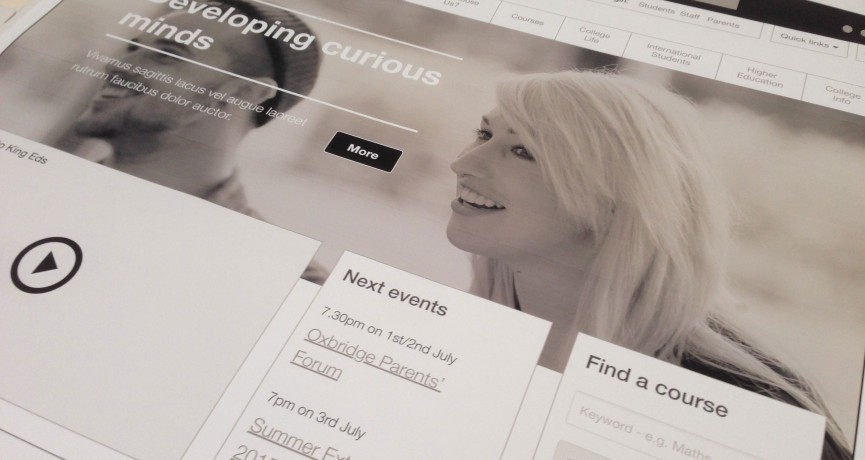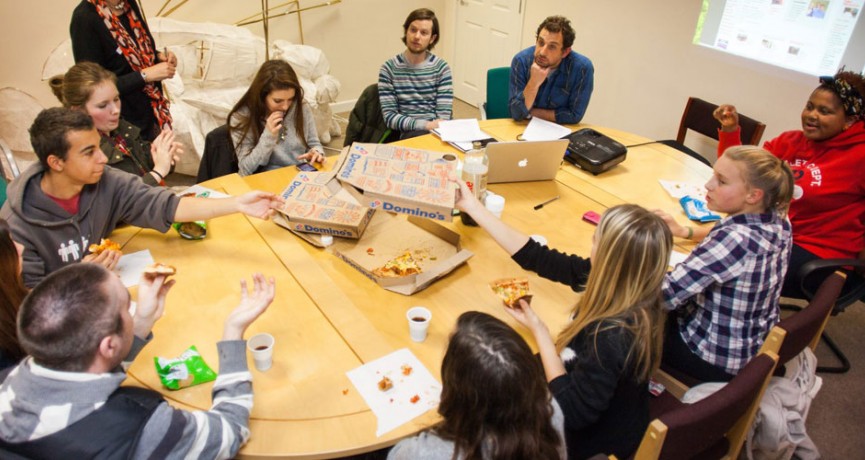Building a multi-site system for university networks
In late 2014 we talked to an existing client at Sheffield Hallam University about a website they needed for a new project.
Tim chatted to Dave from the University for a little while and built up a rough picture of what they were looking for. The next day we got a call from an existing client at the University of Bath with a similar request. The call described an almost identical website and we quickly realised there was a national project underway, where there was a need for a number of websites with some very similar aims.
This was our early introduction to HEFCE’s National Networks for Collaborative Outreach (NNCO) scheme.
Project outline
The National Networks for Collaborative Outreach (NNCO) scheme aims to encourage more young people into higher education.
The scheme is managed by HEFCE and requires each regional university network to host a website providing information about outreach activity, and signpost other information to support schools and colleges as they prepare their students for HE. There were to be 34 regional networks and 4 national networks
I won’t go into the full details about aims of the scheme, but for further reading they can be found here on HEFCE's website.
Where we started
We spoke more with Sheffield Hallam University about the project and their interpretation of aims of the website. And we started talking with 4 other networks in the south of England to understand their own requirements and thinking about how we could deliver something that would support each network.
A steering group was quickly formed of 5 networks in the south of England. They already knew each other and it made sense to pull resources and develop a website specification to which they could all contribute. Yet at this early stage, before funding had been released, there was little clarity about the exact requirements of the website.
We felt we had to be the ones to drive this and keep things focused.
Early concepts
We developed outline documents to illustrate how a website could support each network and give them the ability to connect with their target schools. We created presentation material, website wireframes and example design mockups and presented these to the 5 networks as well as Sheffield Hallam University.
Our approach was to create one central website system that would drive each network’s website. Each could have it’s own visual identity and scope for specific features, however all would share a common set of functions and be driven from the same codebase.
Contributions came back from each network and we iterated our initial concepts into a more formal functional specification.
Setting up a feedback loop
One of the key factors in making this project a success was clear communication. We were to be dealing with a number of clients from different universities and we had to be responsive to their needs and open to their recommendations. Whilst we have the expertise in developing digital products, it is the clients who had a greater understanding of the high level aims of the project. And listening to them and building on their knowledge was key to its success.
Soon into the project we quickly set up a project collaboration area using Teamwork. This allowed us to keep everyone up to date with development progress, but was also a place where each network could leave bug reports and discuss new features. Rather than us being inundated with unregulated email requests for new features, features were suggested to the group and each network could then contribute with their own feedback.
This acted as a great validation mechanism, whereby unnecessary features were discarded by the group yet positive enhancements gathered momentum and the feature became refined by each network’s contribution. To a point where we could then build them into the system.
A working model
Getting an initial working site up and running quickly was essential. Timescales were tight as HEFCE required each network to have its website up within a few weeks of receiving the funding. Fortunately we had been working with our steering group for a few months prior to the official allocation of funding and as such, were far down the road developing our website system by the time each of the websites were ‘officially’ due to go live.
The first version of the websites went live at the end of February 2015. This was great as it allowed the 5 networks in our steering group and the network based at Sheffield Hallam University to get their hands on their website.
A tailored system
The Outreach system we developed included a tailored set of features that offered the exact functionality required of the project. The bespoke Content Management System provided a focused set of tools for each network to manage their own content.
We created a PDF user guide and a walk-through video to ensure there were no barriers for the networks to begin adding their content.
A shop window
The launch of these first 5 websites acted as a great shop window for our website system. Other networks were able to see what we’d developed and as it was a centralised system, there was very little setup time when bringing other networks on board. Which was key as all networks were under pressure to launch their websites quickly.
We were soon presenting our system to universities across the country.
Iteration is key
The entire NNCO project was brand new and we were all very aware that the website’s focus, requirements and particular functionality may need to evolve. The Teamwork collaboration tool became invaluable and allowed the networks to discuss new features and functionality based on actual usage, not just on expectations.
The fact that we had built the system so each website could grow independently from others was crucial. But that they were all centrally joined meant we could roll out global features with ease.
Conclusion
The project is still ongoing and the sites are still growing, which is as much a success as anything else. One of the main aspects of the project’s success is in how we coped with the input from multiple clients. Setting up an area for project collaboration was crucial.
Being ahead of the game was also very helpful. We were able to get our system developed in advance of the demands from other networks wanting to have their websites set up quickly.
Published 31st May 2016


